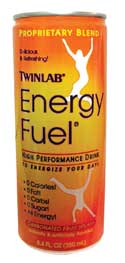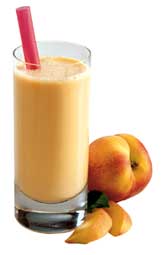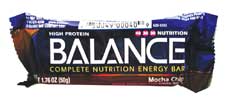
A commonly asked question is: “What ingredient systems are used in the fortification process to help deliver a great tasting product while masking undesirable flavors?” Some answers lay in traditional food preparation methods, used by chefs since ancient times.

No Bitter End
For example, a bitter note can be masked, to some extent, by the addition of something sweet. A chef adds a pinch of sugar to a simple tomato sauce to cover up the flavor of the bitter herb oregano or to balance the sauce's tartness. The flavors “melt together” after cooking to complement each other.A little sugar or sweetness in a “complementary” ingredient goes a long way. The bitter notes of a nutrient are more acceptable to a consumer in a chocolate-based beverage or fortified nutrition bar where the chocolate has a synergistic bitterness. The important point is to focus on the amount of bitterness and the level that is acceptable to the consumer in order to provide a balanced flavor system that encourages repeat purchases.
One model called BASICS™ [developed by the author] assists in formulating a tasteful product containing fortified and encapsulated nutrients. The products' flavor systems create unique problems and conditions that need to be addressed individually. BASICS is the acronym for Balance, Acidity, Sweetness, Intended flavor and texture, Color and Saltiness. In the design process of a formula, these are the components that need be adjusted to create an aesthetically pleasing product. One can argue that of these components, the three most important affecting flavor are Salt, Acidity, and Sweetness (referred to by this author as “SAS™”).

Beyond Sugar and Salt
Choosing the proper flavoring materials is critical. One may have to decide whether to add a salty product like cheese or anchovy; a sweet product like honey, sucrose or reduced tangerine juice; or an acidic lemon juice to balance out the flavor. Both the manufacturing process and intended flavor/texture of the overall product govern the choice.
Formulating a product with a balanced taste and flavor profile depends on several factors, including the SAS ingredients, of which there are a great variety of options. Examples of salty components include Parmesan cheese, Cheddar, sea/kosher salt, anchovies, meat base, and salted butter. A few sweet items that can add flavor and sweetness include prunes, carrots, brown sugar and reduced orange juice. A short list of acidic ingredients that can play a favorable role in masking or enhancing a flavor are lemon or lime juice, vinegar (malt, cider, red wine, white distilled or balsamic), tomatoes or a tart fruit purée. Some ingredients have a significant impact on more than one sensory category, such as mango purée (sweet and tart), reduced orange juice (sweet and tart), brown butter (salty, sweet and savory) and grapefruit juice (both tart and sweet).

A Parallel Perspective
Certain flavor systems or “tricks of the trade” are used in flavor houses by technologists. They are scientific in nature but fundamental in application. A chef may use the same type of process that is used in a “high tech” solution. The scientific approach is based on analytical and molecular structure, while the approach of a creative chef is based on flavor and the effects on a particular application. Both disciplines learn by experimental process and deductive-based solutions.Carol Militescu, senior flavor chemist with a flavor house, says, “Many functional products can benefit from the addition of a masking agent; however, this is not always the only choice. Choosing the appropriate flavor, flavoring material or the combination thereof is the most effective way to overcome the unique challenges posed by various functional ingredients. For example, citrus blends and mixed fruits such as fruit punch work well to mellow vitamins. Products featuring calcium can be improved through the addition of a flavor enhancer to help smooth out the overall mouthfeel of the product. Although individual herbs have different profiles, selecting flavors that will complement rather than mask the herbal profile often yields the best finished product. For example, grapefruit works well with inherently bitter herbals. Protein and fiber tend to absorb flavors themselves, so you may need to raise your flavor level to reach the desired impact or select an enhancer to help boost your product.”
The concentration of a specific ingredient helps determine the decision to mask, enhance or dilute for optimum flavor acceptability. The level of an undesirable flavor affects the ability to change that flavor. Therefore, one must understand its properties and intended use.
Becky Sells, applications technologist with a flavor supplier, says, “The approach you will take in flavoring fortified foods is dependent on the type of product you are fortifying and the amount or concentration of your active ingredient. For example, it is challenging to flavor a vitamin tablet because there is a higher concentration of vitamins in a small serving, increasing bitter attributes. In addition, there are little to no additional ingredients to help mask this bitterness. In this case, you would most likely require a masking flavor along with a flavor complementary to the taste of the active ingredient.” Another option would be to cover the tablet with a sweet flavored coating. Success is achieved when the pill passes from mouth into the stomach!
“When the same amount of vitamins (that would be used in a tablet form) is put into a product with a larger serving size—such as a nutritional bar—complementary flavors and the diluting effect of the additional ingredients masks bitter notes. In this case masking flavors might not be necessary,” notes Sells.

A Balancing Act
Balancing a flavor is a tricky job. A flavor chemist has many tactics that allow flavors to be experienced at the beginning or end of consuming a product. The timing of the flavor release mechanism is unique to each system. This is one reason flavorists have hundreds of savory and sweet flavors in their libraries. Each flavor has attributes that are required for different manufacturing processes (e.g., freezing, retorting, aseptically packaging or hot filling), and other factors such as storage, shelflife, pH and color of the product also impact flavor.
It is critical not to use a flavor that has natural characteristics in discord with the product's profile. For example, one should not try to use a sweet grape or mango flavor to mask an active bitter note. Mango, for instance, is not inherently bitter, and the end result will be an unrecognizable flavor of a bitter mango. Coffee or chocolate flavors are a more natural fit, and often are paired with bitter, fortified products. As another example, Dutch chocolate is more an alkaline product, and would not complement a low pH solution.

It is advisable, when possible, to bring in a flavor specialist early in the project, be it a chef or flavor chemist.

Encapsulation Benefits
Encapsulation can increase stability and shelflife of an active ingredient or finished product. Improved finished product flavor is a prime reason for encapsulating off-flavored fortifiers such as vitamins, minerals and other bioactive components. Several mediums are used for encapsulation. Gums, maltodextrins and other starches commonly are used as the encapsulating matrix for spray dried flavorings. Sometimes starches are combined with gums to further enhance stability and shelflife.Other encapsulated products are designed to break down in specific mechanical conditions such as heat, or liquid/mechanical manipulation caused by chewing. If a fat with a low melting point encapsulates a flavor or nutrient, the flavor or nutrient is exposed when heat is applied to product.
For example, butter is a favorite of chefs. It is a balance of salt, sweetness, savory and, possibly, color. When butter is cooked or browned, it obtains a nutty flavor that complements savory and sweet applications. However, when butter is used in product that undergoes a cooling processing or packaging step, the product clogs the pipes. This can be eliminated with an encapsulated butter flavor that is not sensitive to temperature.
A pleasurable organoleptic experience is provided to consumers when formulators carefully craft a product's taste and overall flavor. Increasingly, people choose foods that are good for them and also fulfill a craving. After all, “you are what you eat,” so you may as well eat what your body needs without sacrificing flavor. Winners will utilize cleverly assembled flavoring systems and encapsulated nutrients!
Website Resources
www.PreparedFoods.com/archives/2001/2001_7/0701flavormasking.htm — Previous PF article on flavor maskingwww.talksoy.com/Health/t98Symposium3.htm— Working with soy-based products www.PreparedFoods.com/archives/2000/2000_11/ 0011dman.htm — Masking bitter flavorswww.recipezaar.com/browse/index.zsp?pg=1&path=00C00B08F05B0CF— People post their marinade and rub recipes here
Sidebar: Flavorings with Great Expectations
As health foods improve in flavor, formulators of such products should consider two “tricks of the trade,” vanilla and soy sauce.Vanilla is considered mostly for baked goods, dairy and confectionery applications. But imagine a touch of vanilla in a beef-type stew to enhance the sweet caramelized flavors of the meat and vegetables. Vanilla also rounds out the harsh bitter notes of chocolate in cakes, syrups or chocolate covered health bars.
Vanilla can give a perception that the product is sweeter than it actually is and, therefore, is used in reduced-sugar products. Visualize a savory gravy, BBQ sauce or marinade composed of a balance of vanilla, brown butter, lemon juice and kosher salt. Such sauces enhance the sweet caramelized flavors of the meat and vegetables, lighten up the mouthfeel with the low pH of lemon, and intensify the whole flavor experience with brown butter and clean kosher salt.
Soy sauce is another flavor enhancer that has hundreds of flavor compounds. The salt, fermentation-derived components and other compounds are complex and useful in many products. Savory gravies, vegetarian snacks, main meals, and dipping sauces all benefit from soy enhancement. The intensity of salt and intended flavor can round out other flavors lacking in these areas.
If such ingredients can be used creatively in an increasing array of culinary applications, think what they may do for nutritional and fortified products.